 |
Making LOTS of the same Diagonal Half Squares |
There are several different ways to make diagonal half squares when you need a lot of the same ones from the same two fabrics. Hopefully one of these methods will be the right one for you.
Method D:
First you need to draw a grid of squares on your fabric. (I'm using 3 7/8 inch squares, which fits the camera better.)
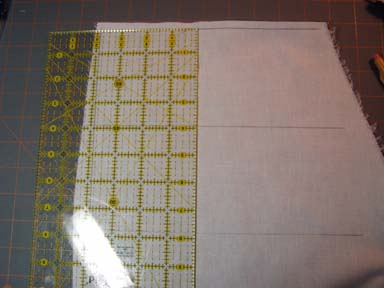
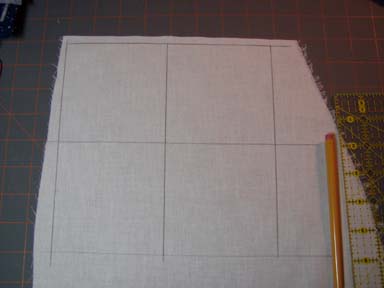
|
Draw diagonal lines through alternating squares in one direction, and then the other, so that each square has one diagonal line through it. These lines will be your cutting lines, so you may use a pencil to mark them if you wish.
You will of course be sewing two pieces of fabric together, but you only need to mark one. Place the two fabrics right sides together, and press. |
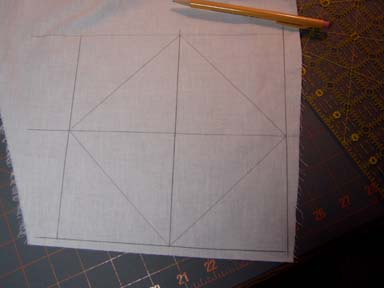
|
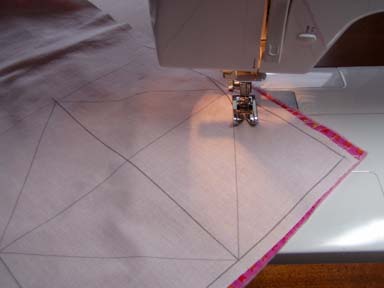
|
Next step is to sew, using a 1/4 inch seam allowance on all sides of the diagonal lines. |
|
If you do not have a true 1/4 inch foot, you can mark these lines. Mark 1/4 inch on both sides of the diagonal lines. These lines will be your sewing lines. |
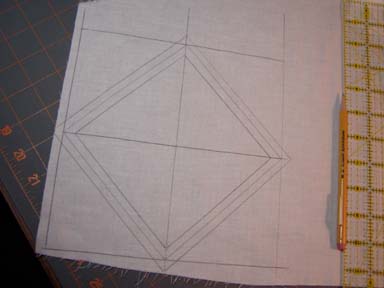
|
|
|
On this diagram the red and yellow lines show you that you can sew this in one continuous line. When they are all sewn, cut them up into squares on the first grid lines you drew. Finish by cutting down the middle of the square on the diagonal lines you drew, and press. |
Another method for making a lot of daigonal half squares is the paper pattern method. This is a little less work than the grid method, since the work is done for you, and it gives you the same results. There are several different papers on the market for making diagonal half squares, most quilt shops carry one or the other. Of course you can find them all on line.
 Thangles™ Thangles™
 Sew Easy Triangles (fusible) |
 Triangles on a Roll Triangles on a Roll
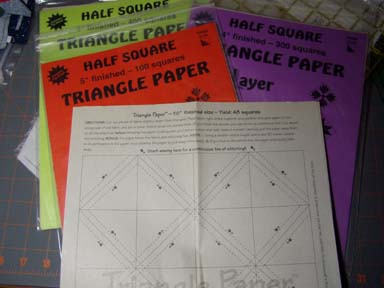
|
Just be sure you read carefully the paper pattern, and know what "finished" size you will end up with. Remember a finished square is when it is completely finished, sewn into the quilt, not the size the square will be when you are finished sewing the two triangles together. Some paper patterns give you both sizes, the finished size and the unfinished size. Know what size you need!
For the paper method, press your two fabrics, right side together. Pin the paper on top, and sew away. Follow the arrows if given. If you need fewer squares than on a sheet, cut them up!
I have personally used Triangle Paper, Triangles on a Roll, and Thangles . (And that is the order I like them in.)
Method F:
There are also a variety of rulers on the market to help you make perfect diagonal half squares. There are so many, that I am not going to explain each one. I have heard good and bad things about all of them, and truly believe that it is up to the individual as to what will work for them.
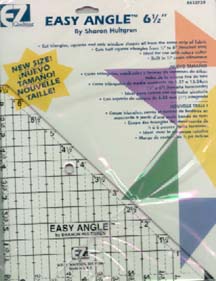 Easy Angle
Easy Angle
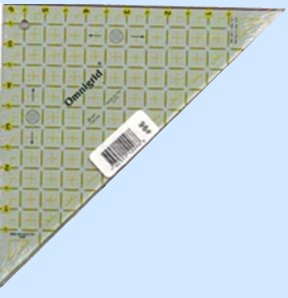 Omnigrid # 96
Omnigrid # 96 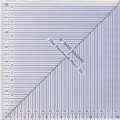 Bias Square Rulers
Bias Square Rulers
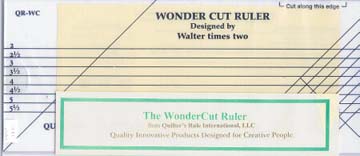 Wonder Cut Ruler
Wonder Cut Ruler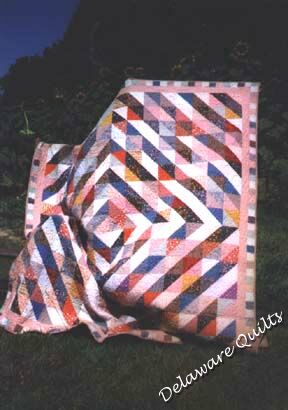
|
Kaye Wood taught a method using bias cut strips sewn into tubes to make diagonal half squares. I have used this method and liked it. It was one of the methods I used on the quilt on the left. That method required a special ruler, Starmaker 8, which was available on line at Kaye Wood's site. Or if you do not have the Starmaker 8, you can use the Omnigrid #96. That quilt was made using a great variety of methods for making diagonal half squares. It was made from scraps that had been donated to be in two large garbage bags. Once those scraps had been washed, dried, ironed, sorted, I had an idea what I was making. I decided on a size for my diagonal half squares and got busy. |
On all methods be sure to trim off the corners, or the "dog ears" so that your squares are truly squares, and don't have any extras sticking out. Before pressing the squares open, trim the tips at an angle, beginning at the edge where the stitching stops. You can trim with scissors or a rotary cutter, just be careful not to cut your stitching.
There are great illustrations about "dog ears" at Bethany Reynolds' web site.
Now that you know how to make diagonal half squares, let's talk about sewing them into blocks, and those blocks into quilts.
One thing that is VERY important is NOT cutting off your points when you sew your diagonal half squares into blocks. When you make your diagonal half squares, the points should be exactly in the corner. If they are not, you either didn't sew straight, or cut straight, or trim them back evenly.
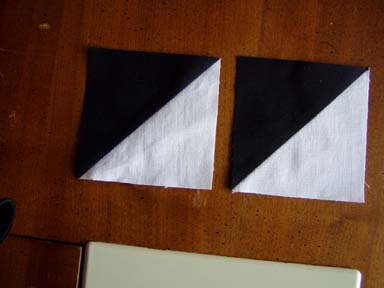 I would say these diagonal squares are perfect.....
I would say these diagonal squares are perfect..... If they are perfect, when you sew them together with another diagonal half square, it will seem like your points jump back, or move away from the edge of the block. This is correct, and that should happen. This way when you sew it with another block, those points are in the correct place, and will show.
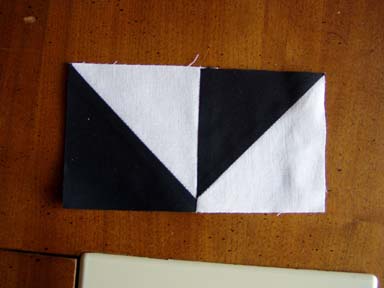
The distance that your points set back from the edge of the block should be exactly 1/4 inch, your seam allowance.
|
Uh oh.... when we measure these points, they are not EXACTLY 1/4 inch away from the edge. |
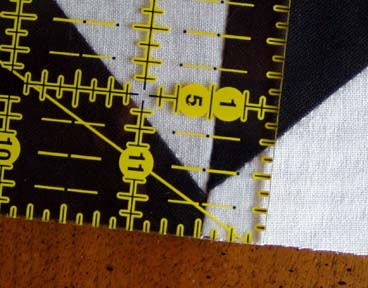
|
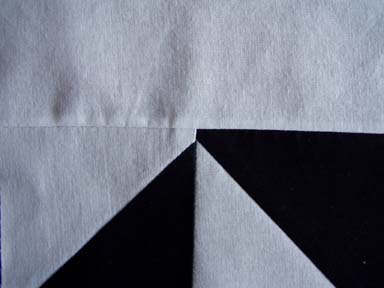
|
If I were to sew these two diagonal half squares into a block, there would be space between the points and seam. |
If these were diagonal half squares that I intended to use in a quilt, I would put them in my "whoops" collection, and make news ones.
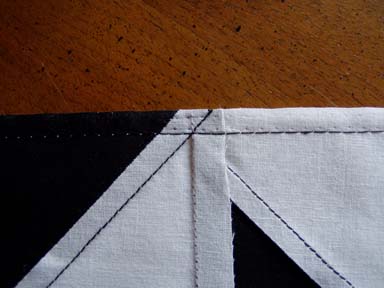
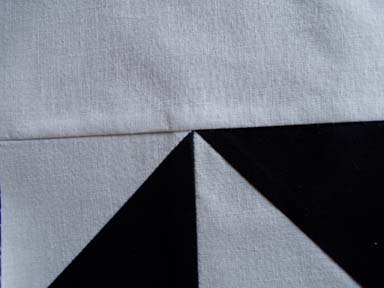
Now these are prefect diagonal half squares!
without the owner's permission. This includes the patterns as well as any graphics and/or instructions that are associated with a pattern.
The content on these pages, including text and images are the sole property of the Delaware Quilts and may not be used in any manner without consent. All Rights Reserved.
Updated October 12, 2025
|Home| Quilts| Email|